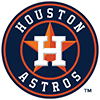The NBA is in a scoring bonanza. But another critical scoring trend lurks unnoticed beneath the surface. Where there are unappreciated trends, there is fantasy opportunity. This … Is Numbers Game.
Sorry, I decided it might be fun to start the article like it was the lead in to a TV news story. But seriously, there is an important scoring trend that demands our attention. Let's dive in.
Scoring is up, bigly.
NBA scores are rising, and fast. This season, teams are averaging 105.5 points per game. In 2015-16, NBA teams averaged 102.7 points per game. That, too, was up from 2014-15 when they averaged only 100.0. Before that, scores had been somewhat stable since the lockout-shortened 2011-12 season. That's a roughly five points per game per team increase in just two seasons. That's a big, fast jump.
It is not just the total scores that are increasing. Teams are scoring more efficiently, too. According to points per possession, there was little change in league scoring patterns between 2012-13 and 2015-16, though 2015-16 was on the high side of the range. The league-wide offensive rating, which is just the points per possession times 100 (or points per 100 possession) hovered between 103 and 104. This season, offensive rating has jumped to 106.0.
The increased scoring has led to some explosive final scores. This season, 39 teams have scored 130 points in a game, and eight have reached 140 points. If that pace continues, those feats will be reached 57 and
The NBA is in a scoring bonanza. But another critical scoring trend lurks unnoticed beneath the surface. Where there are unappreciated trends, there is fantasy opportunity. This … Is Numbers Game.
Sorry, I decided it might be fun to start the article like it was the lead in to a TV news story. But seriously, there is an important scoring trend that demands our attention. Let's dive in.
Scoring is up, bigly.
NBA scores are rising, and fast. This season, teams are averaging 105.5 points per game. In 2015-16, NBA teams averaged 102.7 points per game. That, too, was up from 2014-15 when they averaged only 100.0. Before that, scores had been somewhat stable since the lockout-shortened 2011-12 season. That's a roughly five points per game per team increase in just two seasons. That's a big, fast jump.
It is not just the total scores that are increasing. Teams are scoring more efficiently, too. According to points per possession, there was little change in league scoring patterns between 2012-13 and 2015-16, though 2015-16 was on the high side of the range. The league-wide offensive rating, which is just the points per possession times 100 (or points per 100 possession) hovered between 103 and 104. This season, offensive rating has jumped to 106.0.
The increased scoring has led to some explosive final scores. This season, 39 teams have scored 130 points in a game, and eight have reached 140 points. If that pace continues, those feats will be reached 57 and 11 times, respectively. Last season, they were accomplished only 36 and five times. In 2014-15, they happened just 23 and three times, which is a similar total to the two seasons prior.
This is interesting and important, but it's not a new observation. Zach Lowe leads a host of writers who have described this phenomenon in greater depth. The next point, however, is rarely acknowledged and basically never discussed.
Scores are still rising
I don't mean that scoring will again increase in 2017-18 – though I'd bet it does. I mean that scoring is rising and likely will continue to rise through the remainder this season.
Scores typically rise during a season. To show that, we start by breaking the season into its five complete months. This leaves out the handful games kicking off the season in October, and closing the season in April. By ignoring October and April, we are left with more meaningful data. The start and end of the season can be prone to outliers, such as the defending champion 2013-14 Heat losing the opener to game one of The Process 76ers, and late-season playoff teams resting their starters.
In 2015-16, the league-average offensive rating increased at least one point per month from November to February. It fell in March by half a point, though March remained almost a full point ahead of January. The shift impacted teams at both ends of the spectrum. Before the All-star break, five teams had a defensive rating less than 100, that shrunk to two after the break. Before the break three teams had offensive rating above 107, which increased to 10 after the break.
The increasing scores continued this year, picking up nearly where it left off. In November of 2015, the average offensive rating was 101.5, and that season's peak came in February 2016 at 105.7. During November of the current 2016-17 season the average offensive rating was 104.4, matching the average achieved in January 2015. In December, it reached 106.6, surpassing the 2015-16 high. It increased again in January to 107.3.
This steady increase was oddly absent in 2014-15, but it is profoundly noticeable in 2012-13 and 2013-14, in addition to 2015-16 and the first two-thirds of 2016-17.
What does it all mean?
It means that the final third of games are very likely to be higher scoring than the first third. Based on recent trends, the difference might be as high as two to four points per team per game. With 31 percent of games remaining (383 games, to be precise), a lot more points are on their way.
How do we use this?
As always, the best use will depend on your league format.
For all leagues, however, the steadily increasing scores emphasize the need to stay vigilant on the waiver wire. Every season, a few players break out right around the All-star break, taking over big roles and becoming critical features of the fantasy landscape. With scores increasing, these breakout players may end up scoring more than their early season counterparts.
Roto Leagues: This might be where this information is most helpful. I'm in two roto leagues this season. In both, almost every team is within 400 points of the team ahead of it in the standings, with roughly half the teams separated by less than 200. With so many games remaining, and higher scores in the games to come, those gaps can be overcome.
The best ways to take advantage is on the trade market. The most straightforward method is to target the Wizards, Cavaliers and Bucks, who have the most remaining games. Try to sell Rockets, Lakers, Grizzlies and Magic, who have the fewest. That strategy, however, achieves many goals and is more obvious, which may make it harder to execute.
A better trade strategy might be to try to shift your team's categorical strengths. Target the scorer from a team who is above you in that category, and in exchange offer to improve a weakness of your competitor. Since we've found evidence of scores increasing, closing gaps in scoring is getting easier. We have not identified similar trends in other categories. Therefore, you are seizing control of the category with the best opportunity for improvement. This still works with a trade partner below you in the scoring standings, but that does not have the added advantage of weakening a player you are trying to pass.
Head-to-Head Leagues: Unfortunately, this finding is significantly less helpful for you. If you use your team's previous production to predict outcomes each week – which I highly recommend – then the takeaway is to make sure to project increased scoring totals.
These findings also influence the perceptions of players' trade values, but there is no one-size-fits-most action item. The best thing you can do is know your league and know your competitors and use that knowledge to find opportunities. For example, in some cases inform another manager about the likelihood of rising scores might help motivate him to accept your offer of a scorer. If you have specific scenarios you would like help with, leave a comment or ask me on Twitter @Rikleen.




























